Price: £199.95 (for set)
RN3500 front light
Weight: lamp, mount and battery 414g
Maximum brightness: 3,500 lumens
Power supply: 7.2V 5200mAh lithium-ion battery pack
Modes: flood beam; spot beam; hybrid beam, four levels in each, plus flashing
Country of manufacture: China
RN180 TL rear light
Weight: lamp and mount 50g
Maximum brightness: 180 lumens
Power supply: built-in 3.7V 800mAh rechargeable battery
Modes: constant, low, medium high; flash, three modes; smart, day, night; auto brake
Country of manufacture: China
This new cycle light set from Olight consists of a white front light and a red rear light. Both use LEDs for better illumination and longer battery life and both use rechargeable power sources.
The lights are produced by another Chinese brand, Magicshine, and are similar to some of that brand’s models.
The RN3500 front light is compact and uses a separate, fairly large, battery pack that straps to the bike’s top tube or down tube. The light unit is 6cm x 4.4cm x 4.2cm, including the mounting foot. It comes with a separate handlebar mount, along with five different length silicone straps for attaching the mount to a range of handlebar diameters, including one for aero bars. Once in place on the bars, a hex nut on the front is used (Olight provide a hex key) to tighten the mount in place. I found my bars fell between the size 2 and size 3 lengths, but there’s a little rubber pad to slide under the mount, and this provided the correct padding to get a firm fit.
Once the Garmin-type mount is in place on the bars, the light unit attaches by a 90-degree twist to lock it on. The silicone straps can also be used to attach the mount to a helmet.
The light housing has a 54cm rubberised lead, ending in a jack plug, which has to be inserted into the corresponding lead from the battery.
The housing itself has five white LEDs, in an array with three at the top and two lower ones.
The battery pack is fairly sizeable – 16.7cm x 4.2cm x 2.8cm – and contains a 5,200mAh lithium ion rechargeable pack. Charging is via a micro-USB port in one end, under a rubberised seal. This also has a charge-check button to indicate its present charge status. A full charge from empty takes about nine hours.
At the other end of the battery pack is a detachable output lead, 42cm long with a female jack socket into which plugs the light unit jack.
The battery pack has a rubber base, shaped to sit on the bike’s tubes, and comes with two straps with hook-and-loop strips to fasten them. These are wrapped round the tube, taking care to make sure they go under your rear brake cable, and they then fasten securely round the pack to keep it in place. The excess cable can be wrapped round the tube, again making sure you don’t interfere with the brake cable, and the power lead can then be plugged into the lead coming from the lamp housing, with excess lead from that similarly wrapped round the top tube.
The battery unit also has a USB type-A socket so can be used as a power bank if needed.
The light housing’s top three LEDs act as wider, flood beams, with the lower pair of LEDs giving a more concentrated spot beam. On top of the unit is a single press button which both turns on the light and cycles it between its various modes and outputs. A long press turns the light off. When turned back on it will go into whichever mode it was in on its last use.
Illumination can be via the spot or the flood lights, or if needed both at once. The first gives a 22 degree beam, and the second a 31 degree light. Pressing the button cycles it through the four outputs: eco, low, mid and high, and finally a flashing mode. Pressing the button twice will change its mode from spot to flood to hybrid (both spot and flood).
Output on eco is 100 lumens on spot setting; 200 on flood, and 350 on hybrid, with burn times of 75 hours, 19hrs 48mins on flood, and 17 hours on hybrid.
At its highest output, the RN3500 delivers 1,400 lumens in spot; 1,800 lumens in flood and 3,500 lumens in hybrid. Burn times respectively are 4½ hours; 2½ hours, and one hour 42mins. At this top setting, the Olight is very bright, with a claimed reach of up to 350m. It certainly picked out distant objects and had a useful bright area of about 100m.
In flashing mode, the front light has a burn time of 15½ hours in spot setting; 9½ hours in flood, and 6½ hours in hybrid.
The main casing of the RN3500 is aluminium alloy and has cooling fins on its side as the unit can get quite warm when used in full power modes for any amount of time.
It is waterproof to IPX5, meaning it will withstand rain and splashes, and is also designed to survive a 1m drop. It comes with a two-year warranty. The light is designed to work in temperatures from -20C to 40C.
Putting the RN3500 set onto the bike is a bit more involved than a light with self-contained batteries, as you have to strap on the battery to the top tube, connect to the lamp housing and wrap the excess lead around the bars.
In use, the spot provided a good pool of light immediately in front of the bike and into the distance. The flood setting was useful in lighting up peripheral parts of the route on bendy sections. The spot penetrated deep darkness a little better. For maximum illumination, but shortest battery life, the hybrid setting, with all five LEDs lit, was very useful at the darkest parts of my routes.
On fast routes, setting the unit to high on the hybrid mode provided a reassuring beam of light reaching far into the night. In most other situations, I found the mid setting bright enough.
The eco setting’s light is pretty meagre. I’m not sure I’d want to use it even in brightly lit urban streets, though if you didn’t think you’d be able to recharge the battery on a multi-day trip, it would provide at least some light for 75 hours. In most normal well-lit environments, the low setting or the mid setting worked well. Flashing mode in daylight provided good visibility and more than 15 hours of battery time in the spot setting.
Switching between modes while on the move involves a double click of the button and I found quite often the unit instead moved up the brightness scale a notch, which is achieved by a single press. You then have to cycle through the brightnesses, including flashing mode, to return to the desired power setting.
The RN3500 is specifically designed for mountain biking, but I found it equally useful on the road, with a good range of modes for urban cycling as well as night riding on unlit country lanes.
The RN180 TL rear light (available separately £39.95) is a very compact unit measuring 7cm x 2.5cm x 1.9cm, and weighing 50g with its mount.
It comes with a choice of two mounts, one for hanging from a saddle and the other to fix to the bike’s seat post. As I have a small saddle bag on my bike, the latter was the obvious choice. Fixing is simple: wrap the silicone band round the post and secure it to the side of the mount in the appropriate cut-out slot. The light unit then attaches to the mount by a quarter turn.
Charging is via a USB micro socket in the unit’s base. A full charge of the 3.7V 800mAh lithium ion battery takes about 1½ hours.
A single push-button switch on top of the unit controls all functions. A brief press will give a charge indicator: a constant green illumination indicates the unit is charged. When it’s charging, it flashes red.
A long press turns on the unit and a similar action will turn it off. Once on, a single click changes the brightness level and, if in flashing mode, cycles between the different flash patterns. Double clicking switches between constant and flashing modes.
In constant mode, the rear light can be cycled between 27 lumens low; 63 lumens mid, and 125 lumens high, with burn times respectively of 3½ hours, two hours, and 1½ hours.
The flashing setting has four different modes: breathe, comet, flash and interactive, with varying types of non-constant lighting. All provide 125 lumens at their ‘lit’ part of the cycle. Depending on which mode selected, you can expect between 2½ and 10 hours of burn time, with straightforward flashing giving the longest time between charges.
There’s also a smart mode, sensing ambient light to provide between 3 lumens and the maximum 125 lumens through the day, and between 9 lumens and 125 lumens at night. In this mode in daylight you can expect 18 hours of burn time, and at night three hours.
The RN180TL also has an auto brake function. If it senses sudden deceleration, it will turn the unit to maximum 180 lumens constant light, effectively acting like a car’s brake light.
The rear light will turn itself off if it senses it has been stationary for four minutes. Any movement automatically turns the unit back on.
The light unit has a plastic body and is waterproof to IPX6 standard, resistant to powerful water jets. It also has a 1m drop standard and is guaranteed for two years.
The RN180TL is a simple-to-use rear light that is compact and will add only 50g to your bike’s weight with its mount.
The rear light could also be used to clip onto rear fixing points of backpacks for runners or walkers using roads at night or in bad visibility.
The RN180TL worked well, provided a good tail light and was visible from a good distance. The light works well on both road cycles and off-road bikes. For most uses, I found the simple flashing mode was best, offering good visibility and top burn time. Constant light mode is useful if cycling in misty or foggy conditions where a steady light might be a little safer.
The brake lighting feature is probably of most use to urban cyclists, where it warns other road users of a sudden stop.
RN3500 front light
Brightness 26/30
Functionality 16/20
Ease of use 14/20
Versatility 8/10
Quality 8/10
RN180TL light
Brightness 23/30
Functionality 15/20
Ease of use 18/20
Versatility 8/10
Quality 8/10
Set value for money 7/10
Total 79/100
- The Olight RN3500 and RN180 TL Bike Lights were supplied to grough by Olight. Details are on the Olight website. Readers using this link can take advantage of a 10 per cent discount on full-price items by using the code GROUGH10 at the checkout. Grough will receive a small affiliate fee for any purchases made this way. The review content was not influenced by this arrangement.
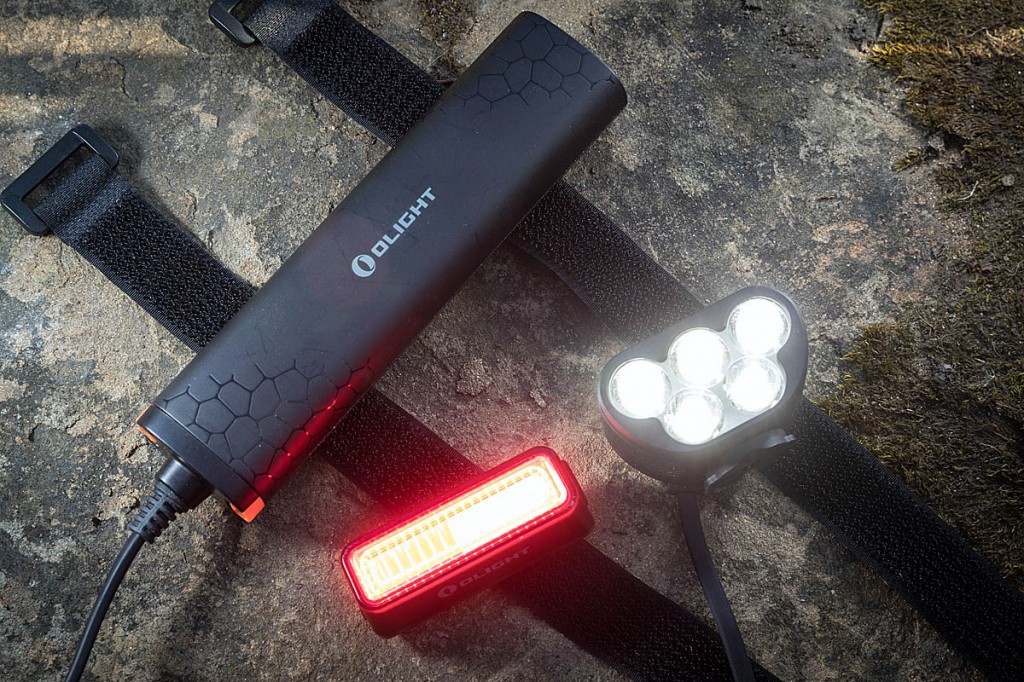
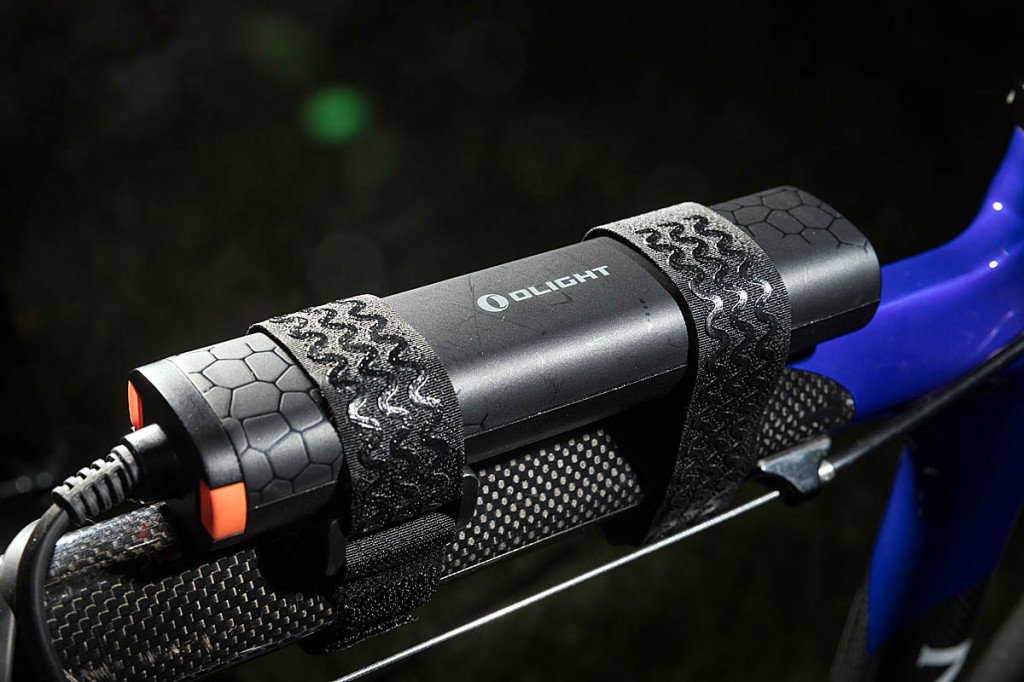
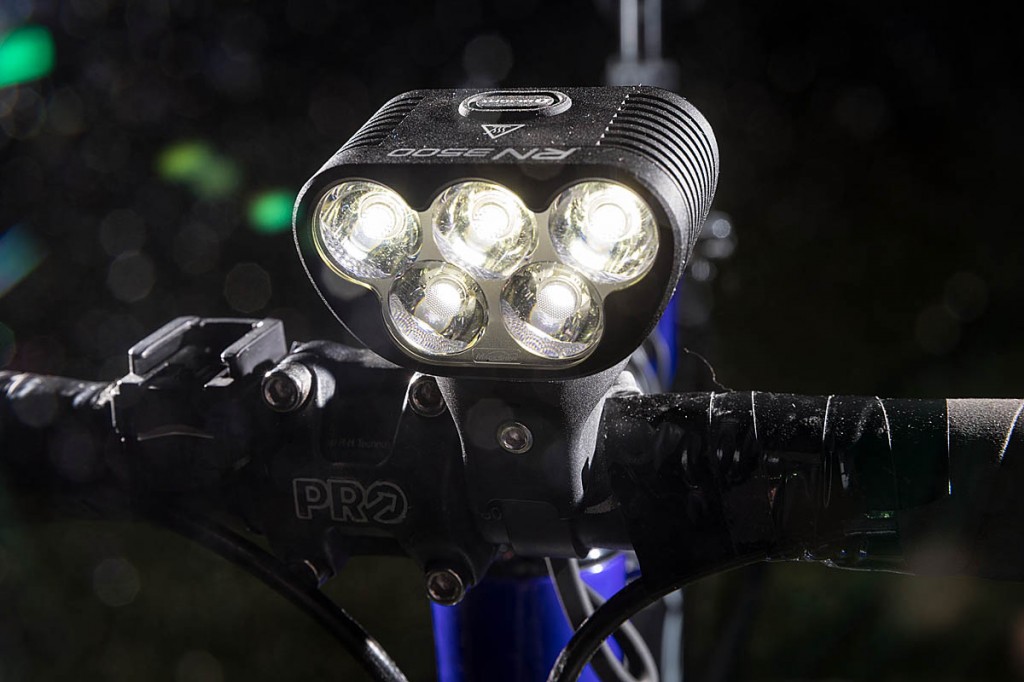
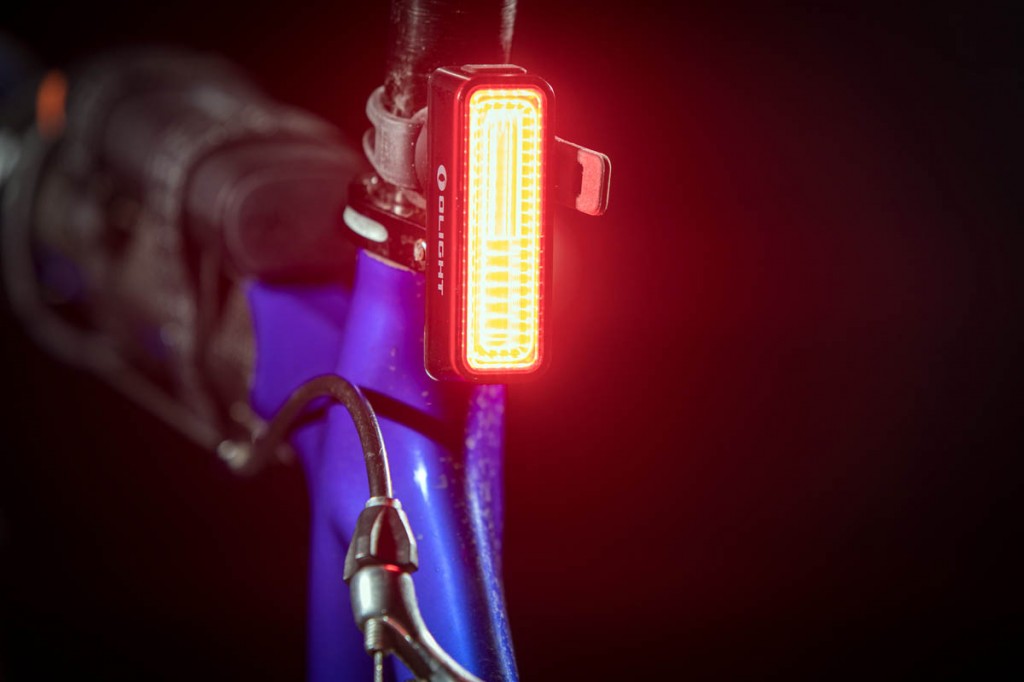
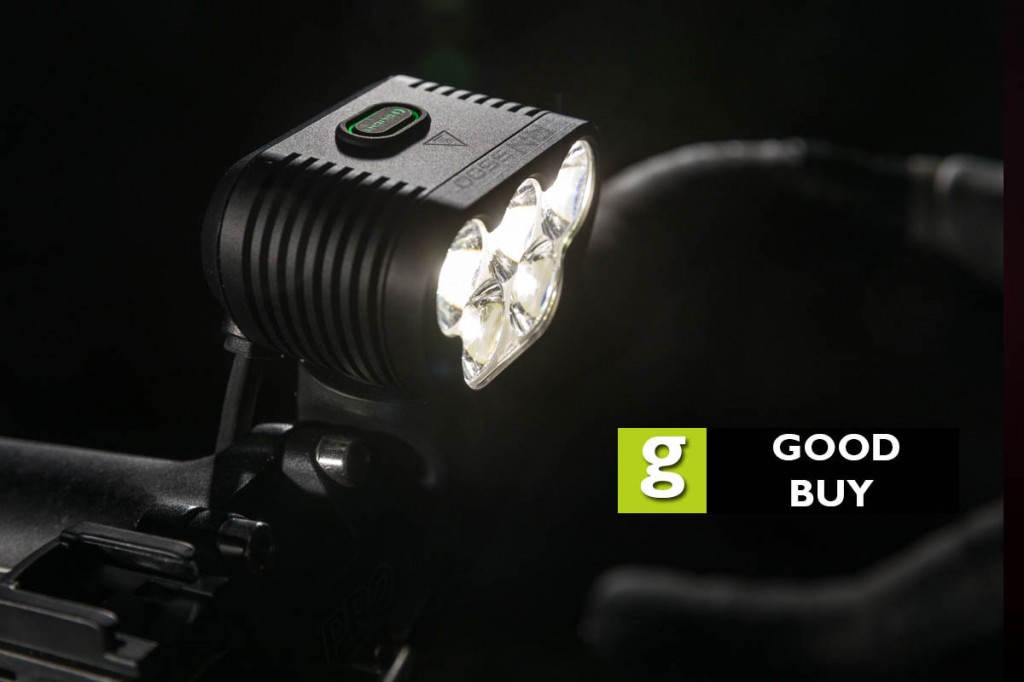
Adam Brook
26 April 2021How on earth can a set of lamps for a push-bike be value for money at nearly £200-00? Have I missed something?